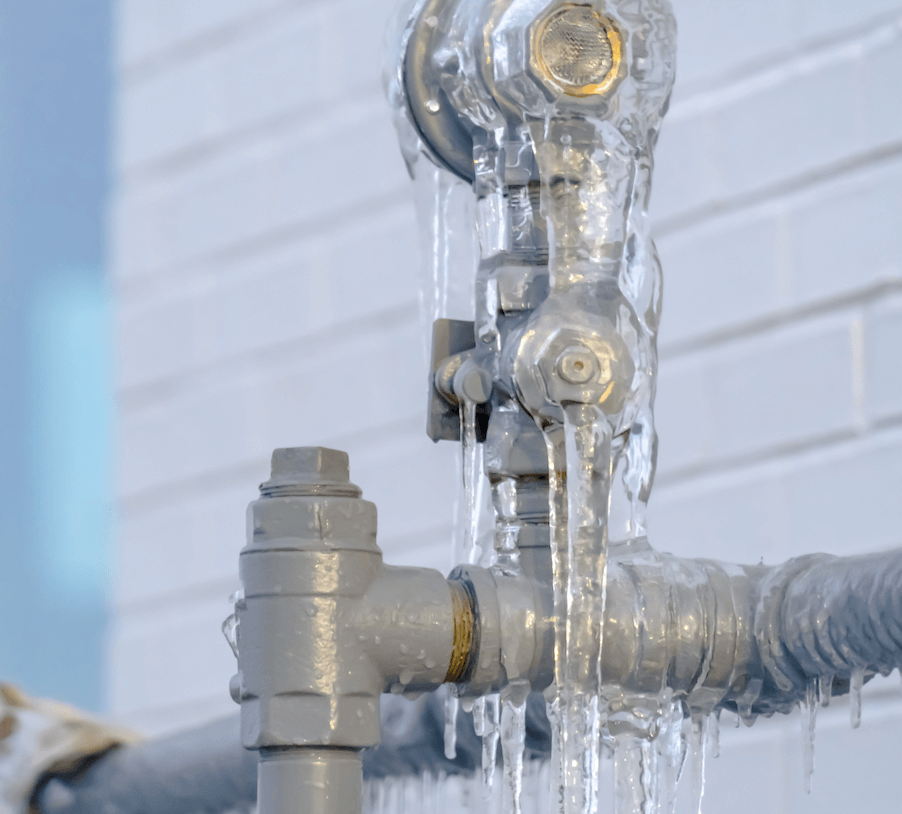Avoiding Frozen Plumbing: Top Tips for Cold Weather
Avoiding Frozen Plumbing: Top Tips for Cold Weather
Blog Article
We have noticed the article relating to Preventing and dealing with frozen pipes below on the net and reckoned it made good sense to quickly share it with you on this page.
:strip_icc()/snow-outdoor-faucet-pipes-4af65d1e5e904fb1aa7bf74071fe5d89.jpg)
Cold weather can ruin your plumbing, particularly by freezing pipes. Below's exactly how to stop it from happening and what to do if it does.
Introduction
As temperatures drop, the risk of icy pipes boosts, potentially bring about pricey repairs and water damages. Comprehending exactly how to prevent icy pipes is crucial for house owners in cold climates.
Understanding Icy Pipes
What creates pipes to ice up?
Pipelines freeze when revealed to temperatures below 32 ° F (0 ° C) for expanded periods. As water inside the pipes freezes, it broadens, putting pressure on the pipe wall surfaces and potentially causing them to break.
Threats and problems
Frozen pipes can bring about supply of water disturbances, residential or commercial property damage, and costly fixings. Burst pipelines can flooding homes and trigger extensive architectural damages.
Indicators of Frozen Pipeline
Identifying frozen pipelines early can stop them from bursting.
Just how to determine icy pipelines
Search for reduced water circulation from faucets, uncommon odors or noises from pipelines, and visible frost on exposed pipelines.
Prevention Tips
Protecting prone pipes
Cover pipelines in insulation sleeves or utilize heat tape to shield them from freezing temperatures. Concentrate on pipes in unheated or outside locations of the home.
Home heating methods
Keep interior areas appropriately heated, specifically locations with plumbing. Open up cabinet doors to enable cozy air to distribute around pipes under sinks.
Safeguarding Exterior Plumbing
Garden tubes and outside taps
Separate and drain pipes yard tubes prior to winter season. Set up frost-proof spigots or cover exterior faucets with insulated caps.
What to Do If Your Pipelines Freeze
Immediate actions to take
If you believe frozen pipes, keep taps available to eliminate stress as the ice melts. Use a hairdryer or towels soaked in warm water to thaw pipes gradually.
Long-Term Solutions
Architectural changes
Take into consideration rerouting pipelines away from exterior walls or unheated areas. Include additional insulation to attic rooms, basements, and crawl spaces.
Updating insulation
Invest in high-quality insulation for pipes, attics, and wall surfaces. Appropriate insulation assists maintain regular temperatures and reduces the danger of icy pipes.
Final thought
Protecting against icy pipes requires aggressive procedures and quick actions. By recognizing the reasons, indicators, and safety nets, property owners can secure their pipes throughout winter.
5 Ways to Prevent Frozen Pipes
Drain Outdoor Faucets and Disconnect Hoses
First, close the shut-off valve that controls the flow of water in the pipe to your outdoor faucet. Then, head outside to disconnect and drain your hose and open the outdoor faucet to allow the water to completely drain out of the line. Turn off the faucet when done. Finally, head back to the shut-off valve and drain the remaining water inside the pipe into a bucket or container. Additionally, if you have a home irrigation system, you should consider hiring an expert to clear the system of water each year.
Insulate Pipes
One of the best and most cost-effective methods for preventing frozen water pipes is to wrap your pipes with insulation. This is especially important for areas in your home that aren’t exposed to heat, such as an attic. We suggest using foam sleeves, which can typically be found at your local hardware store.
Keep Heat Running at 65
Your pipes are located inside your walls, and the temperature there is much colder than the rest of the house. To prevent your pipes from freezing, The Insurance Information Institute suggests that you keep your home heated to at least 65 degrees, even when traveling. You may want to invest in smart devices that can keep an eye on the temperature in your home while you’re away.
Leave Water Dripping
Moving water — even a small trickle — can prevent ice from forming inside your pipes. When freezing temps are imminent, start a drip of water from all faucets that serve exposed pipes. Leaving a few faucets running will also help relieve pressure inside the pipes and help prevent a rupture if the water inside freezes.
Open Cupboard Doors
Warm your kitchen and bathroom pipes by opening cupboards and vanities. You should also leave your interior doors ajar to help warm air circulate evenly throughout your home.

Do you enjoy reading up on 6 Ways to Prevent Frozen Pipes? Try leaving a short review further down. We would be delighted to see your suggestions about this write-up. In hopes to see you back again soon. Feel free to set aside a second to promote this post if you enjoyed reading it. Thank you for your time. Return soon.
Free Estimates Report this page